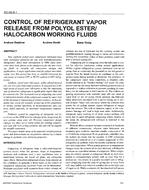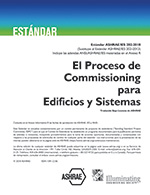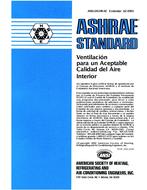Description
New synthetic polyol ester compressor lubricants have been developed primarily for use with hydrofluorocarbon refrigerants. Since their introduction in 1989 these lubricants have been shown to be satisfactory for the new working fluids in virtually all compressor designs and applications. A major application area for polyol ester lubrication over this period has been as retrofill lubricants for conversion of existing CFC or HCFC systems to HFC refrigerants. Synthetic polyol ester lubricants, unlike refined mineral oils, are very pure man-made products. A consequence of the high purity of polyol ester lubricants is that the outgassing rate of dissolved refrigerant is significantly higher than that for mineral oils. The increased rate of outgassing can result in lubrication failure of the compressor caused by vapour lock of the oil pump or degreasing of contact surfaces. Such a situation may occur, for example, at start up of the compressor or during normal operation, in multicompressor split systems, liquid injection, or internally compounded compressors. Problems caused by outgassing of refrigerant can be overcome at the OEM level by redesign of the compressor for new systems using ester oil. However, compressor design changes are often not a viable option for existing compressors that still have a long potential life and will be eligible for retrofill conversion. Details some of the potential retrofill problem areas and demonstrates an inexpensive solution by a simple change in synthetic ester lubricant properties.
KEYWORDS: year 1995, refrigerants, vapours, lubricants, compressors, failure, replacing, laboratory testing
Citation: Symposium, ASHRAE Trans. 1995, Vol.101, Part 2
Product Details
- Published:
- 1995
- File Size:
- 1 file , 530 KB
- Product Code(s):
- D-17174




